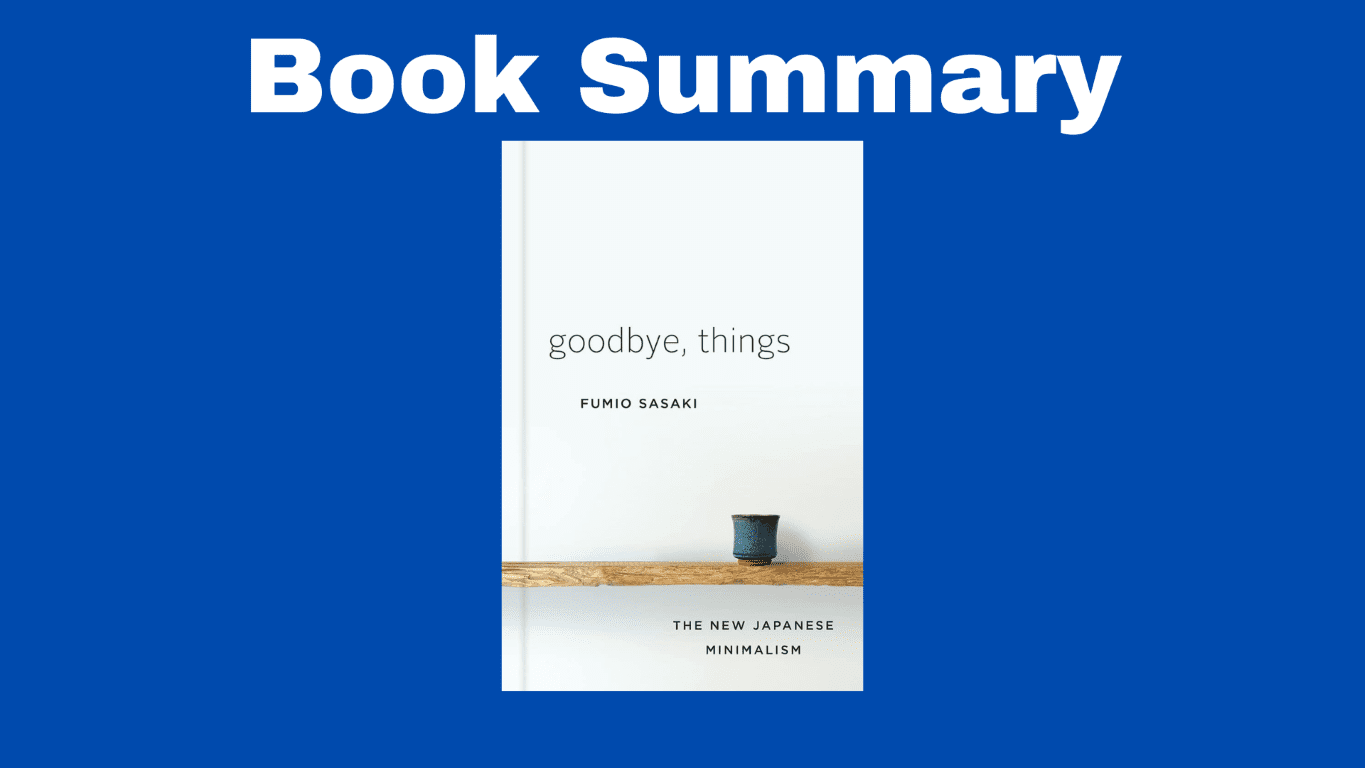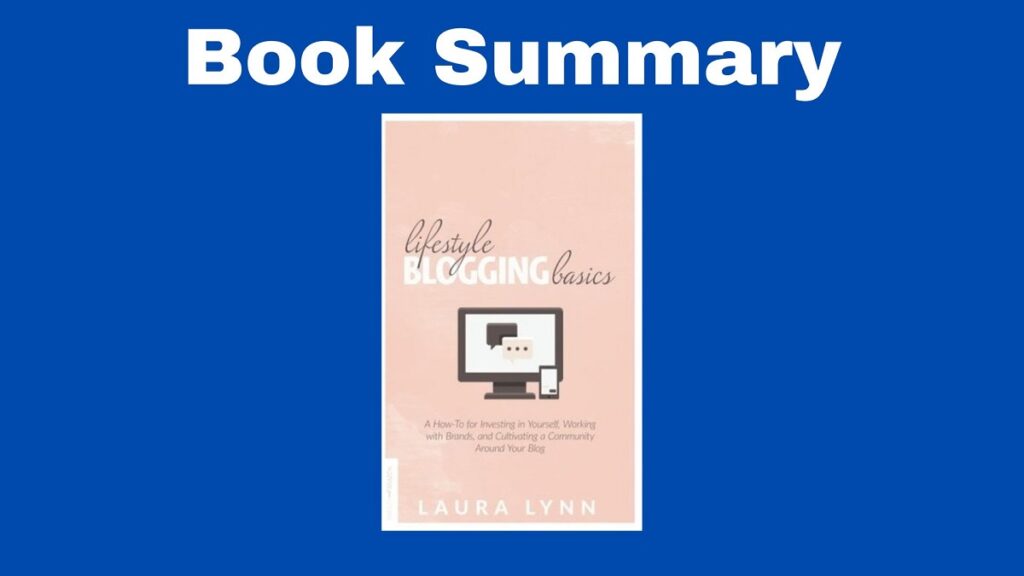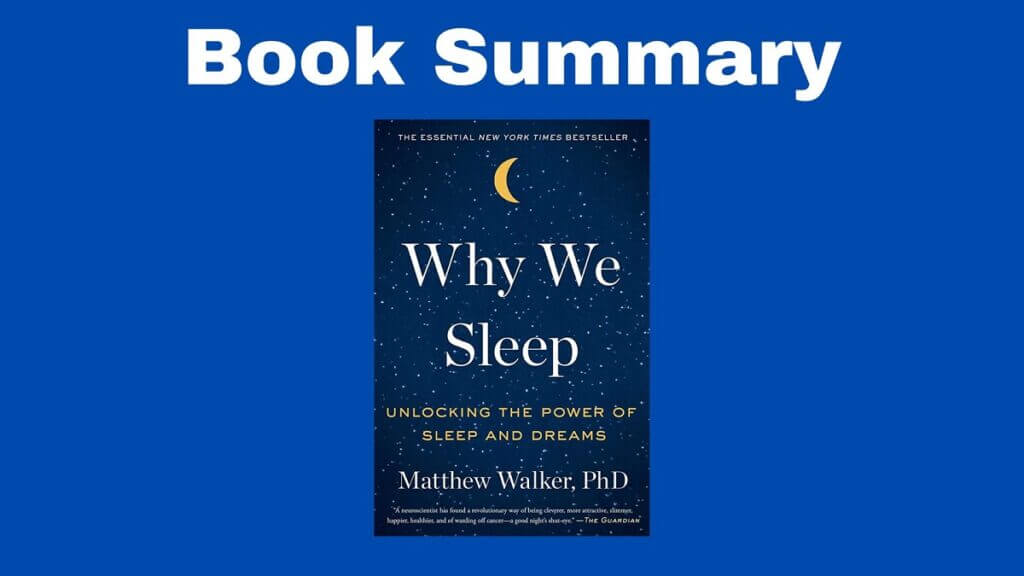The Book in Three Sentences
In this summary of Goodbye, Things, you’ll learn about a man’s journey to declutter his life. After living stressed out about owning a lot of things he didn’t need, Fumio Sasaki found happiness in owning less. As a result of this process, he gained focus, gratitude, and freedom.
Goodbye, Things: The New Japanese Minimalism Summary
The author describes minimalism as:
- Reducing items to a minimum
- Removing the excess so that we can focus on what matters
Introduction
There’s happiness in owning less. Minimalism is a lifestyle in which you reduce your possessions to the bare minimum. The main benefits of minimalism include organized rooms, ease of cleaning, and the fact that it reflects happiness.
Chapter 1: Why Minimalism
Everyone started out as a minimalist in the first place.
The movement encouraged the author to get rid of objects such as his book collection, a big kitchen cupboard, expensive clothes, camera equipment, an electric guitar and amplifier, a desk, a 42-inch TV, a home theater, and a PlayStation 3, developed photographs and letters, among many other things.
Japan used to be a minimalist country, but that changed over time. The movement became popular again when Steve Jobs used minimalist ideas to develop some of the devices he worked on, such as the iPod, iPhone, and iPad. Steve Jobs was actually inspired by Japanese Zen and since the iPhone has many adopters in Japan, many people started appreciating minimalism again.
What led to minimalism?
- Information and material overload.
- The fact modern devices such as a phone allow us to do several things. Some of these include making calls, taking pictures, watching TV, listening to music, playing games, using a flashlight, and so on.
Chapter 2: Why Did We Accumulate So Much in the First Place?
We want something and we get it. As soon as we get used to the object we bought, the feeling of happiness wears off. The problem is that we keep wanting new things. The joy of victory isn’t as strong as despair or defeat. The joy of victory only lasts around three hours and this also applies to buying new things.
The problem isn’t buying new things, the problem is when what we own becomes part of our perceived identity. Our possessions should be tools that allow us to do a job and nothing else.
Chapter 3: 55 Tips to Help You Say Goodbye to Your Things
- Discard the preconception that you can’t discard your things.
- Discarding something takes skill.
- When you discard something you gain more than you lose.
- Ask yourself why you can’t part with your things.
- Minimizing is difficult, but it’s not impossible.
- There are limits to the capacity of your brain, your energy, and your time.
- Discard something right now.
- There isn’t a single item you’ll regret throwing away.
- Start with things that are clearly junk.
- Minimize anything you have in multiples.
- Get rid of it if you haven’t used it in a year.
- Discard it if you have it for the sake of appearance.
- Differentiate between things you want and things you need.
- Take photos of the items that are tough to part with.
- It’s easier to revisit your memories once you go digital.
- Our things are like roommates, except we pay their rent.
- Organizing is not minimizing.
- Tackle the next (storage) before the pest (clutter).
- Leave your “unused” space empty.
- Let go of the idea of “someday”.
- Say goodbye to who you used to be.
- Discard the things you have already forgotten about.
- Don’t get creative when you’re trying to discard things.
- Let go of the idea of getting your money’s worth.
- There’s no need to stock up.
- Feeling the spark of joy will help you focus.
- Auction services are a quick way to part with your possessions.
- Use auctions to take one last look at your things.
- Use a pickup service to get rid of your possessions.
- Don’t get hung up on the prices you initially paid.
- Think of stores as your personal warehouses.
- The city is our personal floor plan.
- Discard any possessions you can’t discuss with passion.
- If you lost it, would you buy it again?
- If you can’t remember how many presents you’ve given, don’t worry about the gifts you’ve gotten.
- Try to think about what the person who passed away would have wanted.
- Discarding memorabilia is not the same as discarding memories.
- Our biggest items trigger chain reactions.
- Our homes aren’t museums; they don’t need collections.
- Be social; be a borrower.
- Rent what can be rented.
- Social media can boost your minimizing motivation.
- What if you started from scratch?
- Say “see you later” before you say goodbye.
- Discard anything that creates visual noise.
- One in, one out.
- Avoid the Concorde fallacy.
- Be quick to admit mistakes. They help you grow.
- Think of buying as renting.
- Don’t buy it because it’s cheap. Don’t take it because it’s free.
- If it’s not a “hell, yes!”, it’s a “no”.
- The things we really need will always find their way back to us.
- Keep the gratitude.
- Discarding things can be wasteful. The guilt that keeps you from minimizing is the true waste.
- The things we say goodbye to are the things we’ll remember forever.
15 More Tips for the Next Stage of Your Minimalist Journey
- Having fewer things does not mean less satisfaction.
- Find your unique uniform.
- We find our originality when we own less.
- Discard it if you’ve thought about doing so five times.
- If you’ve developed your minimalist, you can skip the “see you later” stage.
- A little inconvenience can make us happier.
- Discard it even if it sparks joy.
- Minimalism is freedom – The sooner you experience it, the better.
- Discarding things leaves you with less, but it doesn’t make you a lesser person.
- Question the conventional ways you’re supposed to use things
- Don’t think. Discard!
- Minimalism is not a competition, don’t boast about how little you have. Don’t judge those who have more than you.
- The desire to discard and the desire to possess are flip sides of the same coin
- Find your own minimalism.
- Minimalism is a method and a beginning.
Chapter 4: 12 Ways I’ve Changed Since I’ve Said Goodbye to My Things
- “I have more time”
These are the qualities the author looks for in the things he buys:
- Minimalist shape, easy to clean
- Colors that aren’t too loud
- Being able to use it for a long time
- Simple structure
- Lightweight, compact
- It has multiple uses.
Quality time, not quality objects lead to happiness
2. “I enjoy life more.”
3. “I have more freedom.”
4. “I no longer compare myself with others.”
5. “I stopped worrying about how others see me.”
6. “I’m more engaged with the world around me.”
7. “I can focus better. I can concentrate on being me.”
Flow is the name given to a further concentration state. In this state, the ego/self disappears, the passage of time goes away, and the joy of living sets in.
8. “I save money and I care about the environment.”
Ways in which you can save money:
- Having fewer things means a smaller house
- Selling things means more money
- You are more selective when you buy something
- Satisfied with what we have which means less desire for something new
- Less stress. Less food and drink anxiety.
- You don’t care about what others things. Simpler events.
- More efficiency/higher income at home.
9. “I’m healthier and safer.”
10. “My interpersonal relationships are deeper.”
11. “I can savor the present moment.”
12. “I feel true gratitude.”
Further Reading
If you liked this summary of Goodbye, Things, you might also like:




